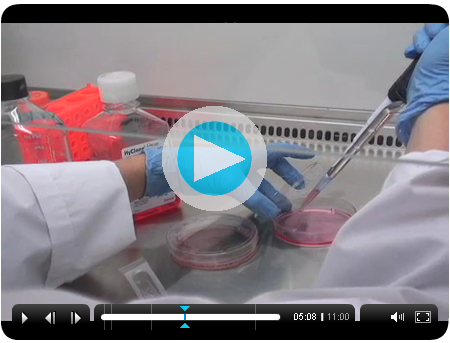Cre Recombinase Adenovirus
Holiday Sale
Cre Recombinase is a Type I topoisomerase from bacteriophage P1 that catalyzes the site-specific recombination of DNA between loxP sites. loxP is a 34 bp DNA sequence at which confers directionality. Cre recombinase is used as a tool to genetically modify genes, such as to delete a segment of DNA flanked by LoxP sites in cells or experimental animals.
This adenovirus expresses both Cre recombinase and GFP. The GFP is in an IRES expression cassette.

Check out this instruction video on using our adenovirus Cre to knockout LoxP flanked gene in primary mouse embryonic fibroblasts (MEF).
1710
Ad-Cre-IRES-GFP
Ready-to-use Cre Recombinase Adenovirus. Ad Cre GFP IRES-GFP 1710
Original price was: $475.00.$332.50Current price is: $332.50.
Related Citations
- The thyroid hormone inactivator enzyme, Type 3 deiodinase, is essential for coordination of keratinocyte growth and differentiation. G Mancino, etc, (2020), Thyroid
- A comparison of In Vivo Viral Targeting Systems identifies Adeno-Associated Virus Serotype 9 (AAV9) as an effective vector for Genetic Manipulation of Leydig Cells in adult mice. A Darbey, etc, (2020), Andrology
- Independent functions of DNMT1 and USP7 at replication foci. O Yarychkivska, etc, (2018), Epigenetics & Chromatin
- Ablation of PPAR¿ in subcutaneous fat exacerbates age-associated obesity and metabolic decline. L Xu, etc, (2018), Aging Cell
- GLP-1 signalling compensates for impaired insulin signalling in regulating beta cell proliferation in ßIRKO mice. Kawamori D, etc, (2017), Diabetologia
- A siRNA screen reveals the prosurvival effect of protein kinase A activation in conditions of unresolved endoplasmic reticulum stress. MA Aguileta, etc, (2016), Cell Death & Differentiation
- A cost-effective method to enhance adenoviral transduction of primary murine osteoblasts and bone marrow stromal cells. Buo AM, etc, (2016), Bone Research
- The p53-SET Interplays Reveal A New Mode of Acetylation-dependent Regulation. Wang D, etc, (2016), Nature
- RB1 deficiency in triple-negative breast cancer induces mitochondrial protein translation. Jone RA, etc, (2016), JCI
- GATA4 regulates blood-testis barrier function and lactate metabolism in mouse Sertoli cells. Anja Schrade, etc, (2016), Endocrinology
- GATA4 is a key regulator of steroidogenesis and glycolysis in mouse Leydig cells. Anja Schrade, etc, (2015), Endocrinology
- Loss of ß2-spectrin prevents cardiomyocyte differentiation and heart development. Lim JA etc, (2013), Cardiovascular Research
- Chromatin effector Pygo2 regulates mammary tumor initiation and heterogeneity in MMTV-Wnt1 mice. K Watanabe, etc, (2013), Oncogene
- The adult mammalian pancreas contains separate precursors of pancreatic and neural crest developmental origins. Arntfield, ME. etc, (2013), Stem Cells and Development
- Recapitulation of spinal motor neuron-specific disease phenotypes in a human cell model of spinal muscular atrophy. Zhi-Bo Wang, etc, (2012), Cell Research
- Janus kinase 2 is required for the initiation but not maintenance of prolactin-induced mammary cancer. Sakamoto K, etc, (2010), Oncogene
About Storage Conditions
All our viral products should be kept at -80°C. At this temperature, the virus will remain stable for 6-12 months (and in some cases, up to 2 years). Once thawed, the product can be stored at 4°C for 2-3 weeks without significant loss of biological activity.
We recommend aliquoting your vectors into low protein binding tubes upon receipt. This helps avoid repeated freeze-thaw cycles, as well as prevent loss of virus. To maintain accurate titer, aliquot in at least 20ul per tube.
Related Products
Ad-RFP-CreERT2
Cat No: 1797
Original price was: $495.00.$346.50Current price is: $346.50.
Ad-CreERT2
Cat No: 1794
Original price was: $495.00.$346.50Current price is: $346.50.
Ad-GFP-CreERT2
Cat No: 1795
Original price was: $495.00.$346.50Current price is: $346.50.
Ad-mCherry-CreERT2
Cat No: 1796
Original price was: $495.00.$346.50Current price is: $346.50.
Ad(RGD)-GFP-iCre
Cat No: 1779
Original price was: $495.00.$346.50Current price is: $346.50.
